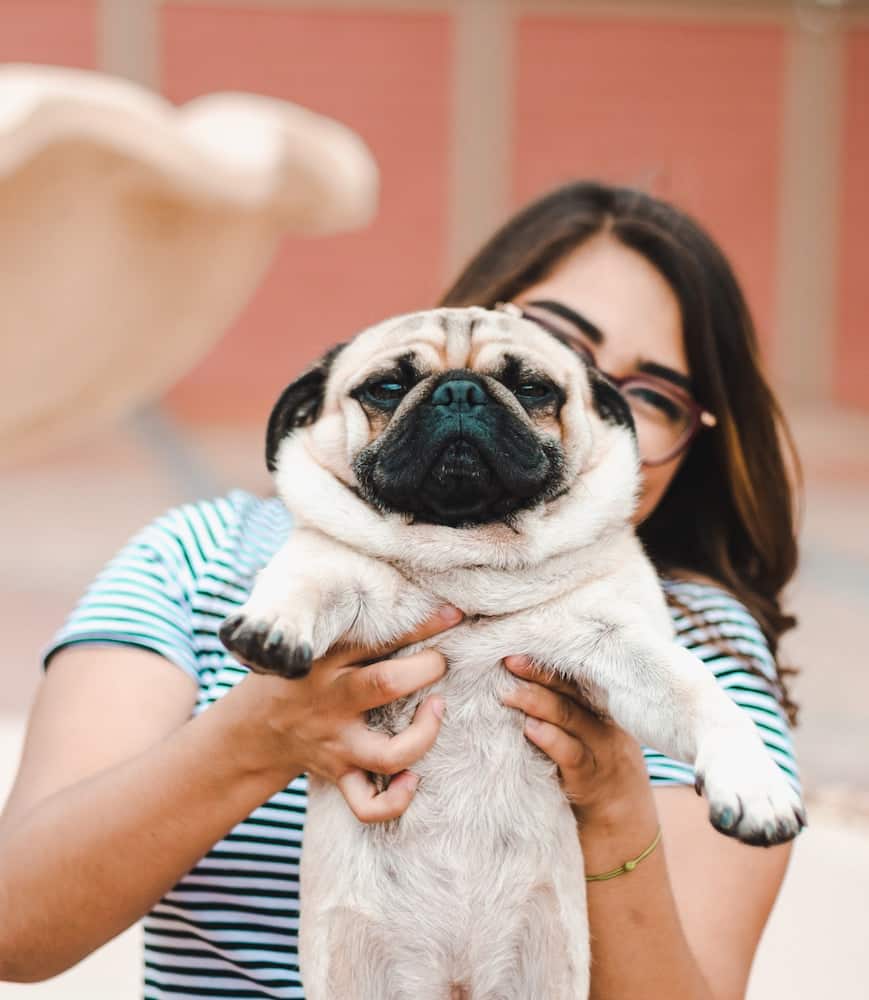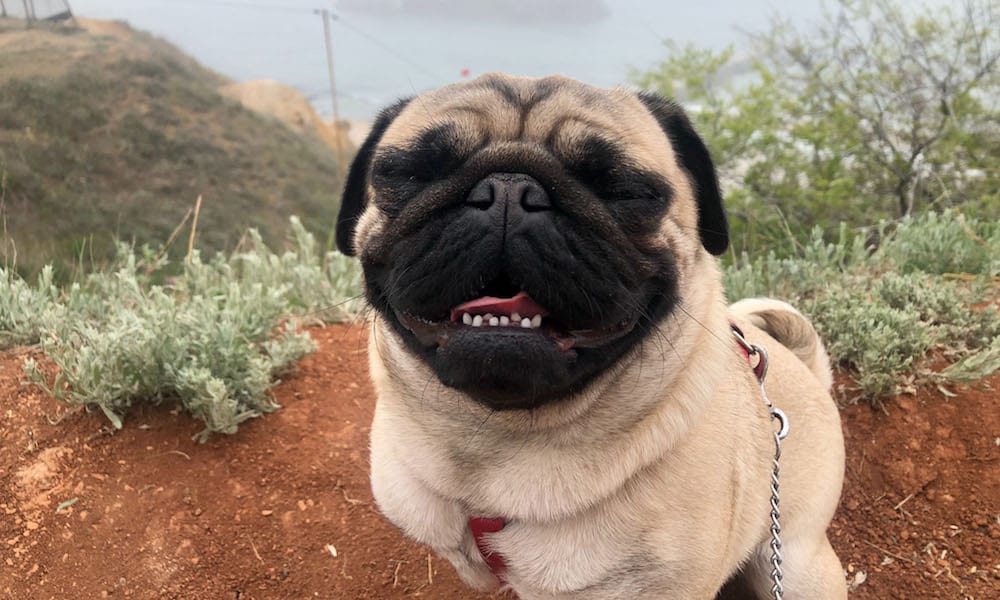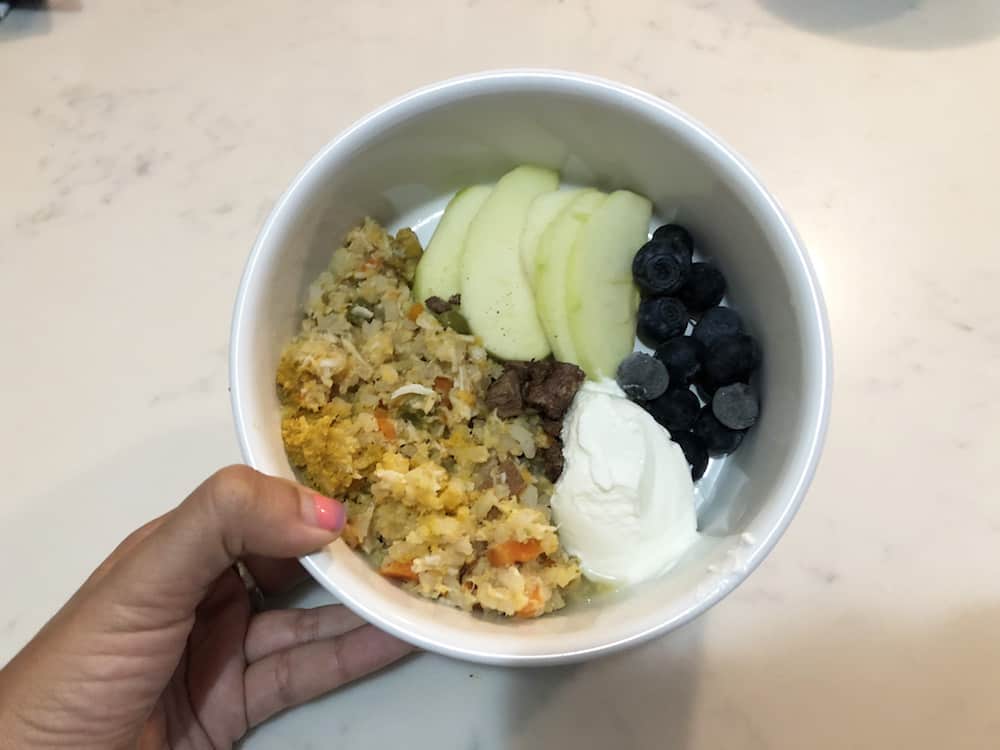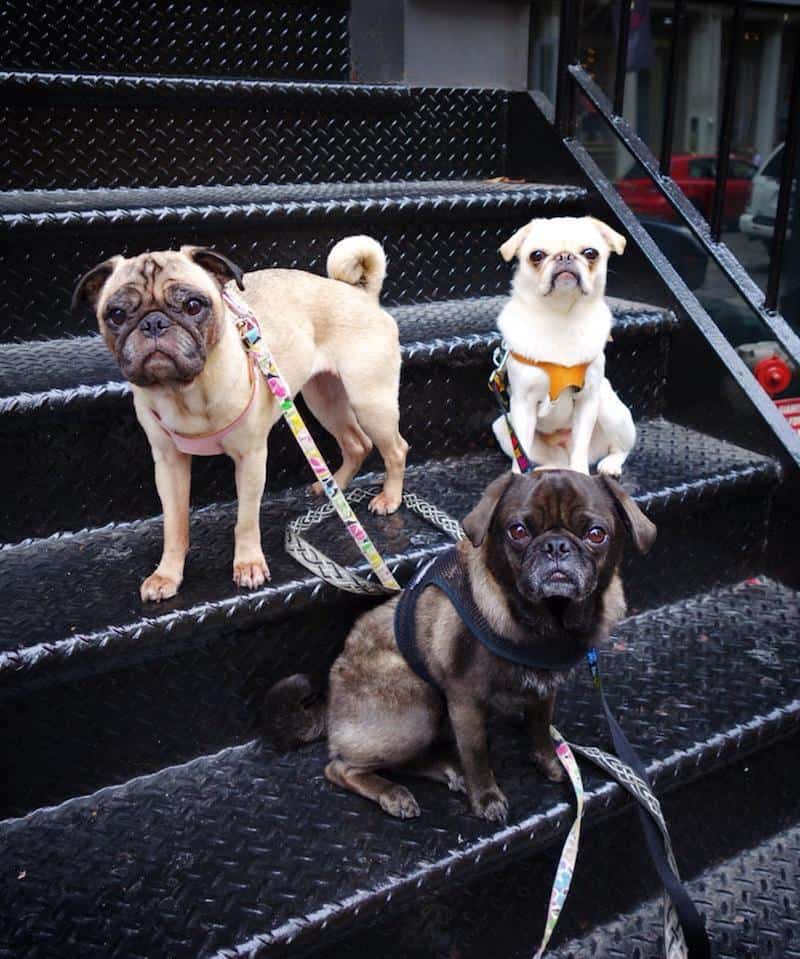How Long Do Pugs Live?
The worst thing about dogs is their relatively short life span. Everyone wants their dog to live forever, understandably. This is especially true for pug owners.
Luckily, there are steps that pug parents can take to prolong their pug’s lives. Read on to learn more about the pug breed’s life expectancy and how to extend their already short lives.

Pug life span
According to the American Kennel Club, pugs have an average life span of about 13 – 15 years.
Like humans, female pugs tend to live longer than their male pug counterparts. The average life expectancy for female pugs is 13.2 years, while males have a shorter life span of about 12.8 years.
However, keep in mind that these numbers are averages. It’s not uncommon to hear of a pug living for either longer or shorter periods of time. This variation, as we will learn, is due to a myriad of factors.

Top causes of death for pugs
A study from the University of Georgia College of Veterinary Medicine analyzed the cause of death among various dog breeds over a 20 year period.
The study, titled “Mortality in North American dogs from 1984 to 2004: an investigation into age-, size-, and breed-related causes of death,” (J Vet Intern Med 2011;25(2):187-198), sifted through 20 years of medical records, covering 74,556 dogs.
Of the thousands of dogs included in this research, about 100 were pugs. The study identified novel patterns of life in death across breeds, and that was no different when it came to pugs. Here are the results:

Pug Puppies
Puppies were categorized separately, since their deaths are typically not attributable to the same kinds of illnesses and ailments that affect senior pugs.
For pug puppies (2 years old and under), the most common reasons for death are:
- Trauma – This would include accidents like falls and being struck by moving vehicles.
- Congenital disease – These are inherited diseases.
- Infection – This would include bacterial and viral diseases.

Adult pugs
The top four causes of death for adult pugs are:
NUMBER ONE: Neurological disorders
Neurological disorders, which refer to any disorder affecting the pug’s nervous system, are the #1 cause of death for the pug breed (27.4%). The nervous system includes the brain, spinal cord and nerves.
The most common and fatal neurological disorder within the pug breed is Pug Dog Encephalitis (PDE). The disease causes an inflammation of the brain, which in turn causes symptoms like seizures, disorientation, head tilting, lethargy and loss of muscle control. It typically strikes pugs between 2 and 3 years of age, though it can be seen in pugs as young as 6 months old and as old as 7 years.
While Encephalitis effects humans, it’s also breed specific, and the only dog breed affected are pugs. Unfortunately, it can be fatal and its causes are unknown. Many veterinarians suspect that it is hereditary and immune-mediated, however there is still no definitive answer for what causes Pug Dog Encephalitis.
NUMBER TWO: Cancer
Cancer is the #2 cause of death for the pug breed (12.5%).
Skin cancer is the leading variety of cancer amongst pugs. A third of all tumors found in the breed are skin tumors. Of that number, 20% are mast cell tumors.
Mast cells are involved in the body’s response to allergens and inflammation. Brachycephalic, or flat-faced, breeds such as pugs are predisposed to this type of cancer. It can occur in the spleen, liver, gastrointestinal tract, bone marrow, and other areas of the body.
Mast cell tumors often appear spontaneously and grow quickly as a raised lump on or under the skin. With fatal mast cell cancer, the most common areas to find tumors on the body are: main body (45%) , hind legs (40%), head or neck (10%).
Ten percent of mast cell tumors are found in other areas of the body. For pugs diagnosed with mast cell tumors, 11% have tumors in more than one area of the body.
Other forms of cancer common to the pug breed include: mammary tumors, testicular tumors, mouth cancer and lymphoma.
NUMBER THREE: Infection
Infection is the third leading cause of death of adult pugs (10.9%).
Some infections, such as skin infections, yeast infections, and staph infections, are relatively common in pugs. They can be serious, but are often not life threatening. These are treatable and result in few cases of death.
However, there are other, fatal infections, that pugs are somewhat prone to. They include a range of diseases including: viral disease, bacterial infection, fungal infections, and protozoal disease.
NUMBER FOUR: Congenital Diseases
Congenital diseases are the fourth leading cause of death for pugs (8.4%).
These congenital ailments are present in a pug at birth. They include stenosis (abnormal narrowing of spaces within the body), heart defects, or septal defect (improper blood flow).

Prolonging your pug’s life span
Extending your pug’s life span is possible! With proper care and attention, you can increase the number of years your pug lives. Plus, you’ll be helping your pug live a healthier and more fulfilling life.
Here are tips to increasing your pug’s life span:
Maintain a healthy weight
It’s easy to overfeed a pug, since they’re never full! But that doesn’t mean you can ignore your pug’s figure.

Pug obesity is a an epidemic. The extra weight on your pug can lead to big health problems that will shorten your pug’s life and lead to big vet bills. It’s not something to ignore, or to pass off as cute. It’s serious.
A pug’s extra weight can lead to diabetes and/or arthritis, and puts your pug at increased risk for liver and kidney diseases, high blood pressure, heart failure and even some cancers. It can also lead to heart problems, breathing problems and affect their hips and joints.
So even though pugs are prone to overeating, being obsessed with food, and having a face it’s hard to say no to, keep an eye on their weight. Ask your veterinarian to assess your pet’s weight, feel over the rib cage by your pug’s armpit, and make sure your pug has an hourglass figure. Good physical health will prolong their life and save you a lot of heartache.
Groom your pug
Proper grooming is essential to your pug, and vital to maintaining healthy skin and avoiding skin infections.

Your pug will require various steps to ensure their health when it comes to grooming:
- Ears: Pugs are prone to ear infections and susceptible to allergic otitis, which is the inflammation of the ear canal. Keep their ears clean with regular cleanings and be vigilant – check the inside for swelling and/or redness, smell the area, and pay attention if your dog scratches their ear more than usual.
- Wrinkles: Your pug’s wrinkles and folds are breeding grounds for bacteria and can easily get infected. Gently wipe the crevices regularly with a pet-specific wipe or a soft cloth being careful to avoid the eyes themselves. Make sure they are dried completely. If the wrinkles seem red or have any discharge, take your pug to a veterinarian as soon as possible.
- Teeth: Dental disease can cause oral infections, infections in other organs, and significant pain. Avoid it by brushing your pug’s teeth daily and going in for regular dental cleanings.
- Fur: Regular brushing, baths, and a healthy diet will significantly reduce your pug’s shedding, and keep their coat silky and healthy.
- Nails: Keep your pug’s nails trim. Long nails can irritate the paws, and even lead to infection.
Dental care

A toothache, sore gums, or bacteria can cause things like infections, pain, and stress. Left untreated, it can begin to affect your dog’s heart, kidneys and/or liver.
Brush your pug’s teeth daily, give them dental chews, and go in for regular dental cleanings.
Exercise

Exercise is important for pugs of all ages. Opening the back door to let your pug out, or bringing them downstairs for a quick pee, is not enough. Pugs need to exercise regularly, since a complete lack of exercise is dangerous for their health.
Promoting physical stimulation and play will help them stay active and fit. But be sure to take your pug out when it’s not too hot, take multiple breaks for water, and rest in the shade. Going out early in the mornings, or later in the afternoon is best so you can avoid the hot sun.
Regular vet visits

Don’t wait for issues to arise before taking your pug to the vet. Pugs require routine veterinary examinations and visits throughout their life. Scheduling regular vet visits will allow you to stay on top of their health.
Your veterinarian will also point you in the right direction and pick up on health problems you might have missed. There are a host of issues that they can spot that the average owner might overlook.
Adult pugs should go in for yearly check ups. If your pug is a senior, then geriatric screenings and visits should be done twice a year.
Healthy diet

One of the best ways to ensure that your pug will live a long and healthy life is to be thoughtful and deliberate about what you feed them. Chemical-saturated kibble is often full of preservatives, fatty additives, and over processed ingredients.
Grocery store kibble is the equivalent of eating fast food for every meal. Luckily, there are other options, and easy ways for you to feed your pug a healthy, nutrient filled, balanced diet. Here are some:
- Choose a high quality dog food or opt to home cook.
- Replace snacks and store bought treats with healthy alternatives.
- Don’t feed your pug table scraps. Instead, keep them on a feeding schedule, where you measure their food and monitor their daily intake.
- Give your pug a daily vitamin and mineral supplement, specific to their age: puppy, adult or senior.









